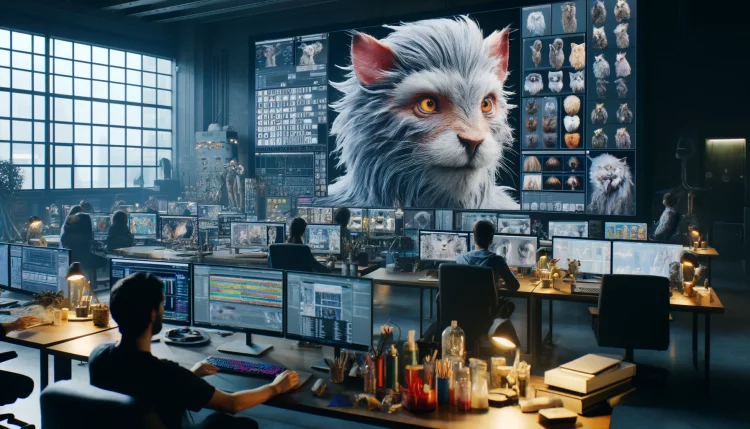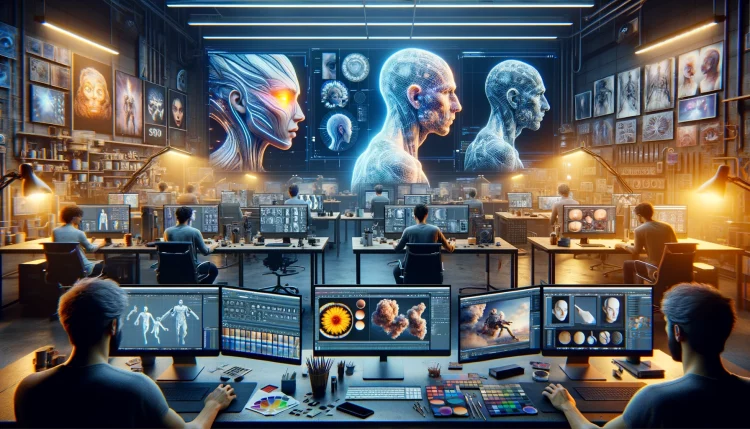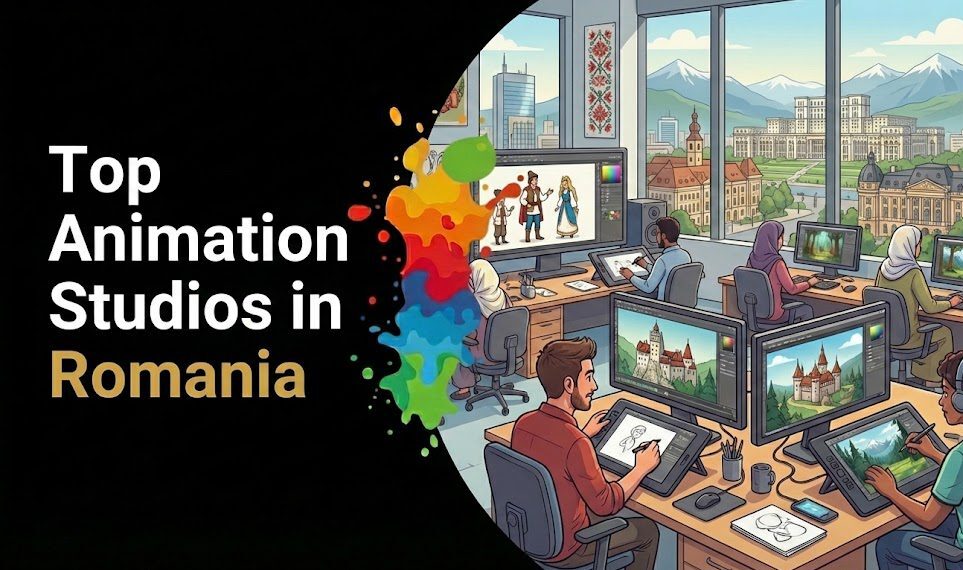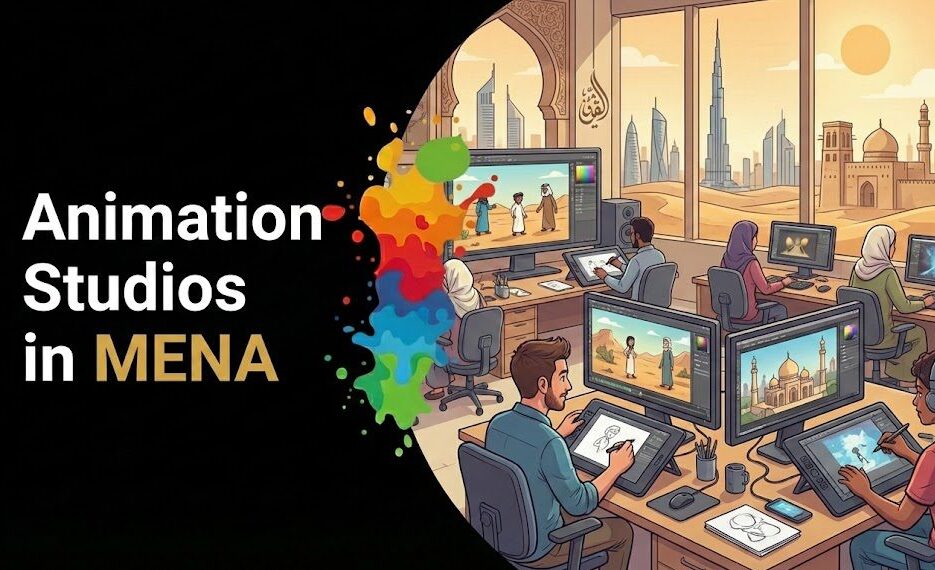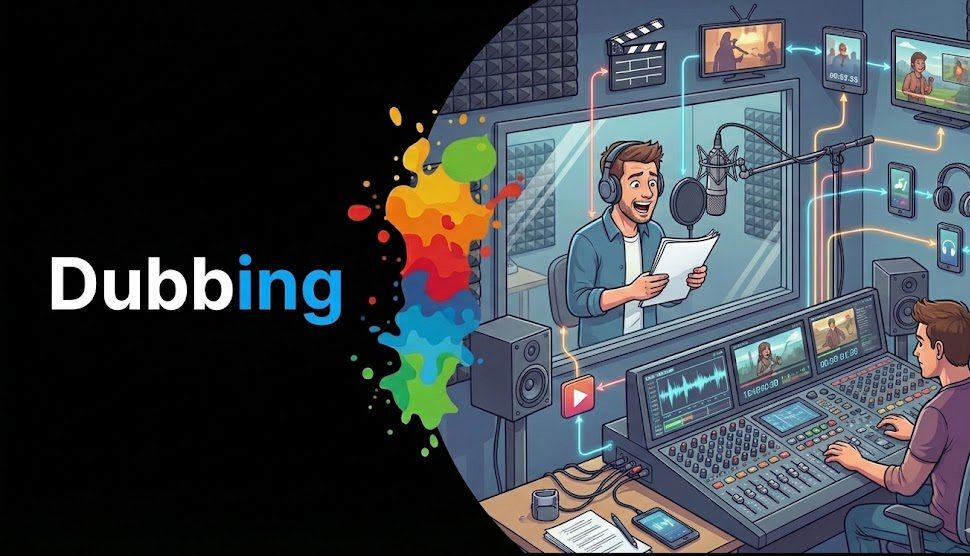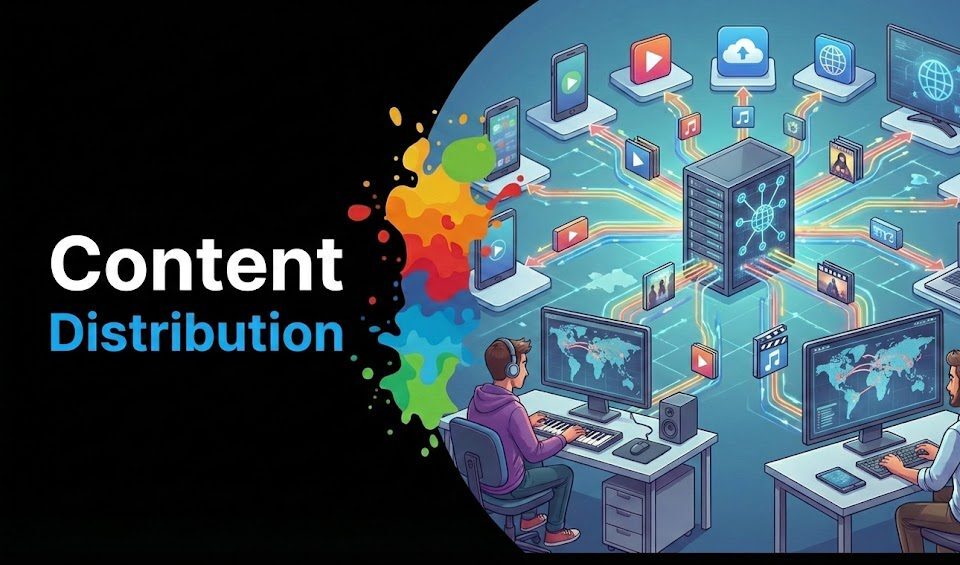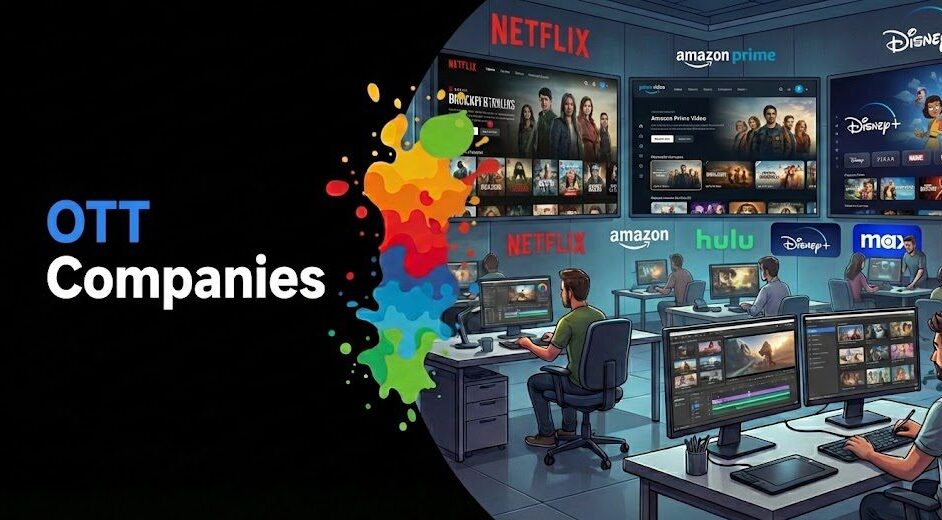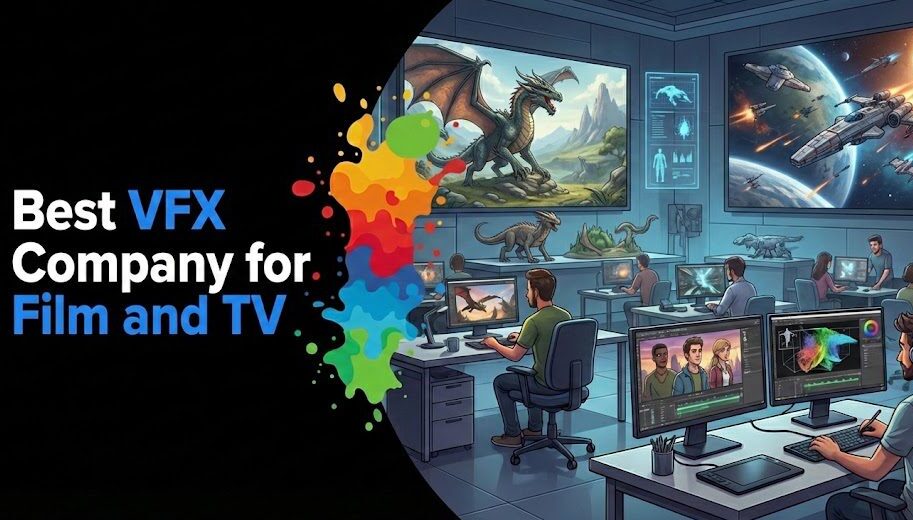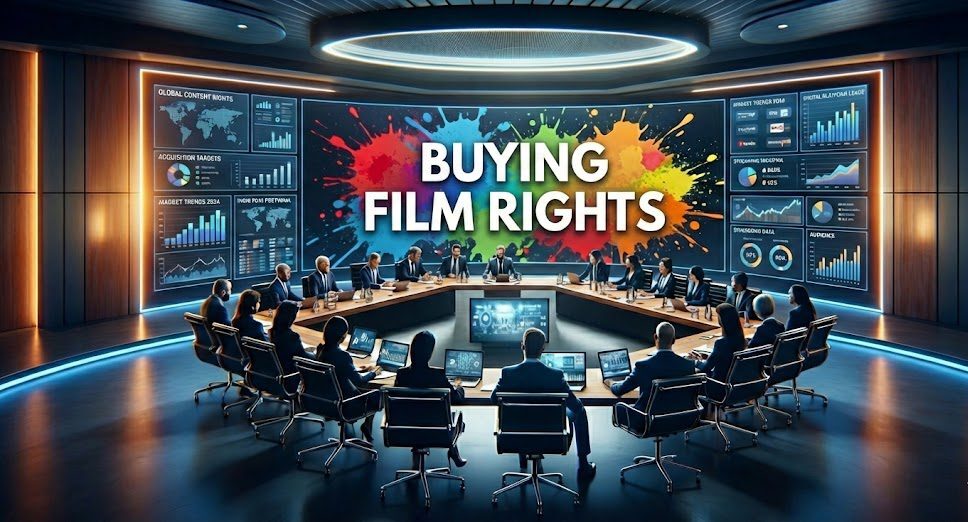Introduction
The world of post-production and VFX has transformed the way we experience film, television, and gaming. These highly technical processes shape the final product of a project, making them essential for visual storytelling. Whether you’re working on a blockbuster film or an indie project, understanding the VFX post-production workflow can be the difference between good and extraordinary content.
In this guide, we will explore the complete post-production VFX process, from tools and techniques to the role of AI and machine learning, helping filmmakers and VFX artists navigate the complexities of modern post-production. We will also highlight the top VFX studios shaping the future of film, as well as dive into how VFX impacts different industries like gaming and TV production.
Key Takeaways
| Section | Key Insights |
| Post-Production and VFX Process | Overview of the complete post-production pipeline, with a focus on VFX integration. |
| Top Trends in VFX | Key trends shaping the future of VFX, including AI, virtual production, and cloud collaboration. |
| Top VFX Tools and Software | A breakdown of essential software for VFX professionals. |
| Leading VFX Studios | Highlights of the top VFX studios, their contributions, and innovations. |
| How VFX Enhances Film and TV Production | The role of VFX in enhancing visual storytelling in film, television, and gaming. |
Table of content
- Introduction
- Overview of Post-Production and VFX
- Importance of VFX in Modern Filmmaking
- The Post-Production and VFX Process
- Breakdown of the Post-Production Pipeline
- Key VFX Techniques and Services
- Top Trends in VFX
- Virtual Production
- AI and Machine Learning in VFX
- Leading VFX Studios Shaping the Future of Film
- Overview of Top VFX Studios
- ILM, Weta Digital, Framestore
- Global Collaboration in VFX Post-Production
- Cloud-Based Workflows
- Global VFX Hubs and Studios
- VFX in Indie Films: Overcoming Budget Constraints
- Affordable VFX Tools for Independent Filmmakers
- Leveraging Freelancers and Small Studios
- The Environmental Impact of VFX Post-Production
- Sustainable VFX Practices
- Reducing the Carbon Footprint in VFX
- Post-Production for Gaming vs. Film
- Differences in VFX for Gaming and Film
- Real-Time Rendering vs. Pre-Rendered Visuals
- Cutting-Edge Tools for Post-Production VFX
- Overview of Best VFX Tools (Autodesk Maya, Houdini, Nuke, Blender)
- Careers and Education in VFX Post-Production
- VFX Career Paths
- How to Become a VFX Artist
- Conclusion
- Final Thoughts on the Future of Post-Production and VFX
Partner with India’s Leading Production Houses

The Post-Production and VFX Process
Post-production refers to the stages of production that happen after filming is complete. This includes editing, sound mixing, and integrating VFX to enhance or create visual elements that can’t be captured on set. The typical post-production pipeline VFX includes several stages, such as compositing, color grading, and rendering.
VFX post-production services are essential to bring digital characters, environments, and special effects into a live-action world. These services use advanced VFX post-production tools like Nuke, Adobe After Effects, and Blender to achieve seamless integration. For a deep dive into the post-production process, check out The Post-Production Process Explained.
Leading VFX Tools and Software
Choosing the right software is crucial for any VFX artist. Here are some of the best tools for VFX post-production:
- Nuke: A leading tool for compositing, widely used in the industry for its powerful node-based interface.
- Autodesk Maya: Perfect for 3D modeling, animation, and simulation.
- Blender: An open-source option that offers a full VFX pipeline for beginners and professionals alike
For more in-depth information on the top tools used by professionals, read Cutting-Edge Tools for Post-Production VFX.
Looking for Global
VFX Projects?
Create Your Free Profile on Vitrina!
- Promote your VFX studio.
- Connect with global studios.
- Showcase projects & clients.
- Find projects matching your expertise.

Leading VFX Studios Shaping the Future of Film
The VFX industry is dominated by several leading studios that have consistently pushed the boundaries of what’s possible in visual effects. These companies are responsible for some of the most visually stunning films and TV shows of the past decades.
Industrial Light & Magic (ILM)
Founded by George Lucas in 1975, Industrial Light & Magic (ILM) is a pioneer in the VFX industry, known for its work on blockbuster franchises like Star Wars, Jurassic Park, and The Avengers. ILM continues to lead the industry with its innovations in digital effects, including virtual production and groundbreaking CGI.
Weta Digital
New Zealand-based Weta FX gained international fame for its revolutionary work on The Lord of the Rings and Avatar. Known for its ability to handle incredibly detailed and complex visual effects, Weta has become a go-to for projects requiring large-scale VFX and highly realistic CGI.
Framestore
Framestore, a British VFX studio, has worked on films such as Gravity, Guardians of the Galaxy, and Avengers: Endgame. It is known for its cutting-edge work in creating digital doubles, realistic environments, and its leadership in the use of virtual reality and augmented reality.
To dive deeper into these studios and their innovations, check out Top VFX Studios Shaping the Future of Film.
Global Collaboration in VFX Post-Production
The VFX industry has become a global enterprise, with major projects requiring collaboration across multiple studios located in different parts of the world. This trend is driven by the rise of cloud-based technology, enabling teams to work remotely and share assets seamlessly.
Cloud Collaboration Tools
Cloud-based platforms like Shotgun and Frame.io have made it easier for studios to collaborate on complex projects in real time. Teams can review footage, make edits, and provide feedback remotely, reducing the need for in-person meetings and accelerating the VFX post-production workflow.
International VFX Hubs
In addition to Hollywood, cities like Vancouver, London, and Mumbai have become major hubs for VFX production due to tax incentives and growing pools of VFX talent
. These locations are home to many smaller studios that contribute to global projects, especially when it comes to high-volume or low-complexity work.
For more on this topic, check out How VFX Studios Collaborate Globally.
VFX in Indie Films: Overcoming Budget Constraints
Independent filmmakers often face significant budget constraints, but VFX technology has become increasingly accessible, allowing indie films to incorporate impressive visual effects without the massive budgets typically required.
Affordable VFX Tools
Programs like Blender and DaVinci Resolve have made high-quality VFX post-production tools available to a wider audience at little or no cost.
These tools enable filmmakers to create sophisticated visual effects, from digital environments to CGI creatures, on a much smaller budget.
Outsourcing and Freelancers
Many indie filmmakers turn to freelance VFX artists and smaller studios to manage their post-production VFX. This approach allows them to take advantage of global talent at more competitive prices
Discover more about indie filmmaking and VFX in VFX in Indie Films: Overcoming Budget Constraints.
Simplify Connections with Production Studios

The Environmental Impact of VFX Post-Production
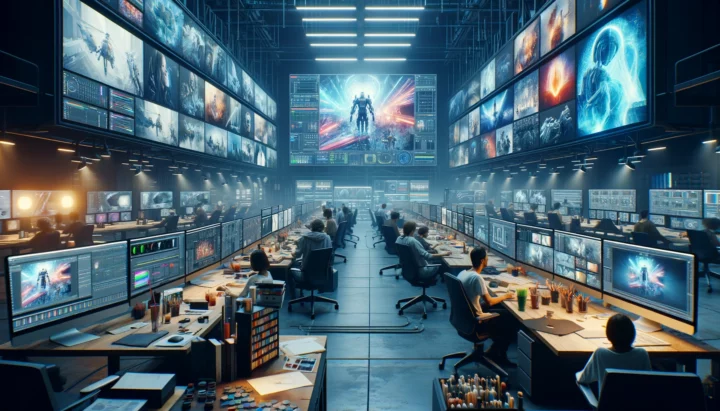
As the VFX industry grows, there is increasing awareness of its environmental impact. From energy consumption to hardware disposal, VFX post-production can have a significant ecological footprint. However, many studios are taking steps to reduce this.
Sustainable VFX Practices
Some VFX studios are adopting green post-production practices, such as using renewable energy in data centers and implementing cloud-based workflows to minimize physical infrastructure. Studios like Weta Digital are leading initiatives to reduce carbon footprints in VFX production
Energy-Efficient Tools
VFX tools are also becoming more energy-efficient, with companies optimizing rendering software to reduce processing times and energy consumption.
The integration of AI in VFX post-production also helps streamline tasks, making the process faster and less resource-intensive.
For more insights into how studios are going green, explore The Environmental Impact of VFX Post-Production.
Post-Production for Gaming vs. Film: Key Differences
Although both gaming and film rely heavily on post-production VFX to create immersive worlds and realistic characters, there are significant differences between the two industries when it comes to the VFX workflow.
Real-Time Rendering in Gaming
One of the most notable differences is the use of real-time rendering in game development, a process that allows for visuals to be generated and displayed in real time, as the player interacts with the game. This contrasts with film, where VFX are rendered in advance and then edited into the final product
. Real-time rendering requires gaming studios to use powerful engines like Unreal Engine or Unity, which can process graphics on the fly as part of the post-production VFX process.
Pre-Rendered Visuals in Film
In film, the post-production VFX workflow focuses on pre-rendered visuals, allowing filmmakers to perfect every detail before the final cut. This approach allows for higher-quality effects, but it also requires longer rendering times compared to gaming
. For example, films often use complex compositing techniques and CGI elements that need to be seamlessly integrated with live-action footage, whereas gaming environments are built to be interactive from the start.
To explore the unique workflows of these two industries further, visit Post-Production for Gaming vs. Film.
Cutting-Edge Tools for Post-Production VFX
With advances in technology, the tools available for post-production VFX are becoming increasingly sophisticated, allowing artists to create stunning visuals with greater efficiency. Below are some of the leading tools revolutionizing the industry today.
Autodesk Maya
Autodesk Maya is one of the most popular tools for 3D modeling and animation, used extensively in both film and gaming. It offers a wide range of features for creating lifelike characters and environments, and its powerful rendering capabilities make it a top choice for high-end VFX projects.
Houdini
Houdini is highly regarded for its procedural generation capabilities, which allow VFX artists to create everything from natural phenomena like fire and water to complex destruction effects. This tool is especially useful in large-scale projects where automating repetitive tasks can save valuable time.
Nuke
For compositing, Nuke is one of the industry-standard tools. It offers a node-based system that gives artists tremendous control over how different elements are layered and combined. Its advanced features make it perfect for integrating VFX in post-production with live-action footage.
Blender
An open-source tool, Blender is gaining popularity for its wide range of capabilities, from modeling and sculpting to compositing and rendering. It’s an excellent option for indie filmmakers and smaller studios working with tighter budgets.
For a full breakdown of the latest software, visit Cutting-Edge Tools for Post-Production VFX.
Careers and Education in VFX Post-Production
VFX Post-Production Jobs and Career Paths
The VFX industry offers a wide range of career opportunities for individuals with different skill sets. From 3D modeling and animation to compositing and visual effects supervision, there are numerous paths to pursue in the post-production VFX field.
- Compositors: Compositors are responsible for combining live-action footage with VFX elements, ensuring that all aspects of the scene look seamless. Using tools like Nuke, they work on layering, color grading, and blendin.
- 3D Modelers: These artists create digital models of characters, environments, and props. They use software such as Autodesk Maya and Blender to produce high-quality assets that are later animated or integrated into live-action scenes.
- VFX Supervisors: A VFX supervisor oversees the entire VFX process, ensuring the director’s vision is realized. They collaborate closely with teams during both the pre-production and post-production stages to ensure that effects are executed properly.
- Motion Graphics Artists: These professionals design and animate visual effects for multimedia platforms, from film and television to gaming and advertising. Their work often involves creating visually stunning motion sequences.
For those looking to start a career in VFX, a combination of formal education, online courses, and hands-on experience is essential. For more insights into the different career paths, explore Post-Production VFX Jobs.
VFX and Post-Production Courses: How to Become a VFX Artist
For aspiring VFX professionals, numerous educational pathways can help you break into the industry. Whether through traditional degree programs or online certifications, education is key to mastering the tools and techniques needed for a successful career in VFX post-production.
- Film and Animation Degrees: Many universities offer specialized programs in film production, animation, and visual effects. These programs provide a comprehensive understanding of the post-production VFX workflow, including 3D modeling, compositing, and rendering.
- Online VFX Courses: Platforms like Udemy, Coursera, and CG Spectrum offer specialized courses in VFX software and techniques. These courses are often more flexible and cost-effective, making them a popular choice for beginners. For example, students can learn tools like Blender and Autodesk Maya through project-based learning.
- Certifications and Workshops: Many VFX studios also offer certifications and intensive workshops on specific software tools. These are designed to provide students with industry-relevant skills and practical experience.
To learn more about the best educational pathways, visit VFX and Post-Production Courses.
Tips for Beginners: How to Start in VFX Post-Production
If you’re new to VFX, here are a few steps to help you get started:
- Learn the Basics: Start by understanding the core concepts of VFX post-production—such as compositing, 3D modeling, and animation. Tools like Blender are free to use and provide a great entry point for beginners.
- Build a Portfolio: Practice by working on small projects, such as short films or personal animations, and showcase them in a portfolio. A strong portfolio will help you stand out when applying for VFX post-production jobs.
- Network with Industry Professionals: Attend industry events, join online VFX communities, and participate in discussions with professionals. Networking can open doors to freelance opportunities and internships.
For more tips and resources for beginners, explore How to Become a VFX Artist.
Conclusion
Post-production and VFX are at the heart of modern filmmaking, gaming, and television production. Whether you’re an industry professional or an aspiring artist, understanding the VFX post-production process is essential to creating visually stunning content. From mastering tools like Autodesk Maya and Nuke to exploring emerging trends like AI and virtual production, there has never been a more exciting time to be part of the VFX world.
By leveraging cutting-edge software, collaborating globally, and continuously honing skills through education and practice, anyone can excel in this dynamic and rapidly growing industry.
Frequently Asked Questions
Post-production encompasses all processes that occur after filming, such as editing, sound design, and color grading. VFX (Visual Effects), on the other hand, refers to the creation and integration of digital elements into live-action footage.
Popular tools include Autodesk Maya for 3D modeling and animation, Nuke for compositing, and Blender for a free, open-source option that supports the entire VFX pipeline.
Key trends include the rise of virtual production, real-time rendering, and the use of AI to automate labor-intensive tasks like rotoscoping and compositing.
Cloud-based platforms like Frame.io and Shotgun enable real-time collaboration between VFX artists working in different parts of the world, making the post-production process more seamless and efficient.
The environmental impact primarily comes from the energy-intensive rendering processes. However, studios are increasingly adopting sustainable practices such as cloud-based workflows and using renewable energy to power their data centers.
Indie filmmakers are leveraging affordable tools like Blender and outsourcing VFX tasks to freelancers or smaller studios to create high-quality effects on tighter budgets.
VFX for gaming typically involves real-time rendering, meaning that visuals are generated on the fly during gameplay. In contrast, film VFX is pre-rendered, allowing for higher detail but requiring longer rendering times.
Many VFX professionals pursue degrees in film production, animation, or computer graphics. Online courses and certifications in specific software tools (like Autodesk Maya or Nuke) are also beneficial.
Beginners can start with free tools like Blender to learn basic 3D modeling and compositing. Online tutorials and courses are also a great way to get familiar with industry-standard software.
Leading studios include Industrial Light & Magic (ILM), Weta Digital, and Framestore. These studios have worked on major blockbuster films and continue to innovate in the VFX industry.


